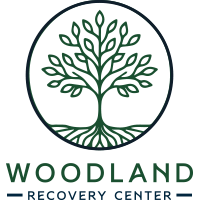Fentanyl is a powerful synthetic opioid, typically prescribed for severe pain management, often after surgery or for those with chronic pain. However, its potency—up to 100 times stronger than morphine—makes it a drug with a high risk for misuse and dependence. Many people find themselves caught in its grip, not because they want to, but because of how swiftly it changes the brain’s chemistry. Fentanyl binds to opioid receptors, flooding the body with dopamine and creating an intense sense of euphoria.
Breaking free from fentanyl’s hold can be difficult, but it’s not impossible. At Woodland Recovery Center, we offer specialized fentanyl addiction treatment designed to guide you through each step of this challenging journey. Our programs are built around compassionate care, tailored to help you manage withdrawal, cope with cravings, and rebuild your life. Contact us at 662.222.2989 to learn more about our addiction treatment programs.
Fentanyl Withdrawal Timeline
Unfortunately, as the body becomes accustomed to the presence of fentanyl, larger doses are needed to achieve the same effects, leading to a dangerous cycle. When someone decides to stop using fentanyl, their body has to readjust, and this process can result in withdrawal symptoms. While withdrawal is a natural part of the recovery process, it can be challenging without the right support.
Understanding the fentanyl withdrawal timeline can help you prepare for what’s ahead. While the specific experience can vary from person to person, the general progression follows a recognizable pattern:
- First 12-24 hours – Withdrawal symptoms typically begin within 12 to 24 hours after the last dose. During this initial phase, feelings of restlessness and anxiety often set in, signaling that the body is starting to crave the substance it has grown accustomed to.
- Days 2-4 – This period is usually the most intense part of the withdrawal process. Symptoms reach their peak, and you might experience both physical and emotional distress. This phase is tough, but it’s also a sign that your body is actively working to rid itself of dependence.
- Days 5-7 – Physical symptoms usually begin to subside around this time, though psychological symptoms like mood swings, anxiety, and cravings may persist. This phase is critical for building resilience and seeking support to manage ongoing challenges.
- Beyond week 1 – After the first week, many of the physical symptoms may have eased, but mental and emotional struggles can continue. Fatigue, anxiety, and cravings can linger, which is why ongoing support is essential for maintaining recovery momentum.
Navigating withdrawal can feel like a storm you’re unsure you’ll weather. However, being aware of the fentanyl withdrawal symptoms can help you face each challenge with a bit more confidence. It’s important to remember that each phase is temporary, and every symptom is a sign that your body is fighting to heal.
Fentanyl Withdrawal Symptoms
Withdrawal symptoms of fentanyl can present as both physical and psychological. It’s essential to be aware of these to recognize what is expected and when extra support might be needed:
- Physical symptoms – Muscle aches, sweating, chills, nausea, vomiting, diarrhea, and abdominal cramps are common during withdrawal. These symptoms can feel similar to the flu, often making the body feel weak and drained. Insomnia and sleep disturbances are also prevalent, further contributing to fatigue.
- Psychological symptoms – Anxiety, depression, mood swings, and irritability are common emotional responses. Fentanyl significantly alters brain chemistry, so its absence can cause intense emotional turmoil. The psychological effects often feel the hardest to cope with because they persist even after physical symptoms subside.
- Cravings – One of the most challenging aspects of fentanyl withdrawal is the craving for the drug. These cravings can be powerful and, if not managed properly, can lead to relapse. Developing coping strategies and strong support systems are critical to overcoming this phase.
If you’re struggling with fentanyl withdrawal, remember that recovery is not something you have to face alone. Here at Woodland Recovery Center, we understand the unique challenges of fentanyl addiction. Our approach is about more than just treating symptoms—we’re here to support you in rebuilding your life.
Start Your Journey to Recovery Today With Our Fentanyl Addiction Treatment at Woodland Recovery Center
One of the most important aspects of our treatment at Woodland Recovery Center is the focus on flexibility. We know life doesn’t pause for recovery, so we provide programs that fit into your daily routine. Whether you’re working, studying, or caring for your family, we’ll work with you to create a treatment plan that helps you regain control of your life.
It’s time to take that first step toward a healthier future. With the proper support, you can overcome the grip of fentanyl and rediscover a life filled with possibilities.
At Woodland Recovery Center, we’re ready to stand beside you every step of the way. No matter how difficult things might seem now, recovery is within reach. Call us at 662.222.2989 or contact us online today.



